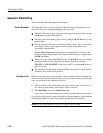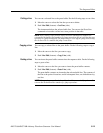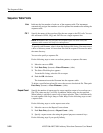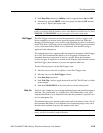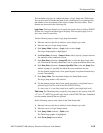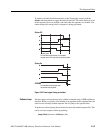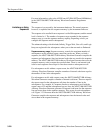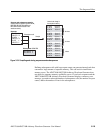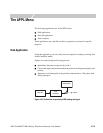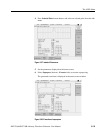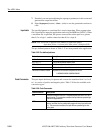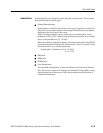
The Sequence Editor
3-128 AWG710&AWG710B Arbitrary Waveform Generator User Manual
For more information, refer to the AWGControl:EVENt:SOFTware[:IMMediate]
in the AWG710&AWG710B Arbitrary Waveform Generator Programmer
Manual.
Limitations on Using
Sequences
The sequence is processed by the instrument hardware. The nested sequence,
however, is expanded into the sequence memory by the instrument firmware.
The sequence to be recalled from a sequence is called Subsequence, and the nested
level is limited to 1. The number of sequence steps expanded in the sequence
memory may go over the sequence memory capacity, depending on how you
configure the sequence and/or subsequence.
The enhanced settings which include, Infinity, Trigger Wait, Goto <N>, and Logic
Jump are neglected in the subsequence when you set the run mode to Enhanced.
Sequence memory usage. Sequence memory controls the maximum number of
subsequence recalls and their repeat counts that can be run. When you load a
sequence, the AWG710&AWG710B Arbitrary Waveform Generator compiles the
sequence and subsequence lines into internal codes that are stored in the sequence
memory. The AWG710&AWG710B Arbitrary Waveform Generator then uses the
sequence memory code to output the waveform data. There is one internal code
item for each sequence line except for lines that contain a subsequence recall.
For subsequence recalls without a repeat count, the AWG710&AWG710B
Arbitrary Waveform Generator compiles a number of internal code items equal to
the number of lines in the subsequence.
For subsequence recalls with a repeat count, the AWG710&AWG710B Arbitrary
Waveform Generator compiles a number of internal code items. These are equal to
the repeat count for that subsequence call times the number of lines in the
subsequence. For example, if a sequence line has a subsequence recall with the
repeat count of 25 and that subsequence has two lines, the AWG710&AWG710B
Arbitrary Waveform Generator generates 50 internal code items for that sequence
line and stores them in the sequence memory. This occurs for each subsequence
call. Figure 3-33 illustrates how the AWG710&AWG710B Arbitrary Waveform
Generator compiles the sequence and subsequences into the internal codes and
stores them in the sequence memory.



